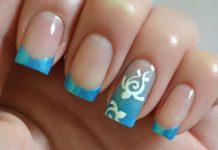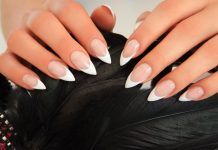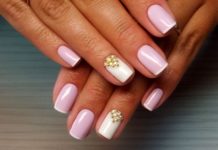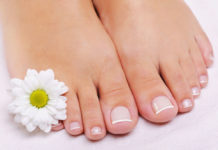Shellac (gel polish) is a relatively new technology in manicure that allows you to create a stable, bright and effective coating for female nails. Its application requires a special UV lamp for drying, so the procedure is rarely performed at home. Removing the coating is somewhat easier. Many women do this on their own, thus saving money on visiting a beauty salon. So, how to remove shellac at home? What tools and tools will be required for this?
Material Content:
Shellac DIY Tools
There are two methods for self-removing shellac: using foil and without it. The list of tools and supplies that will become necessary for the procedure depends on the chosen method.
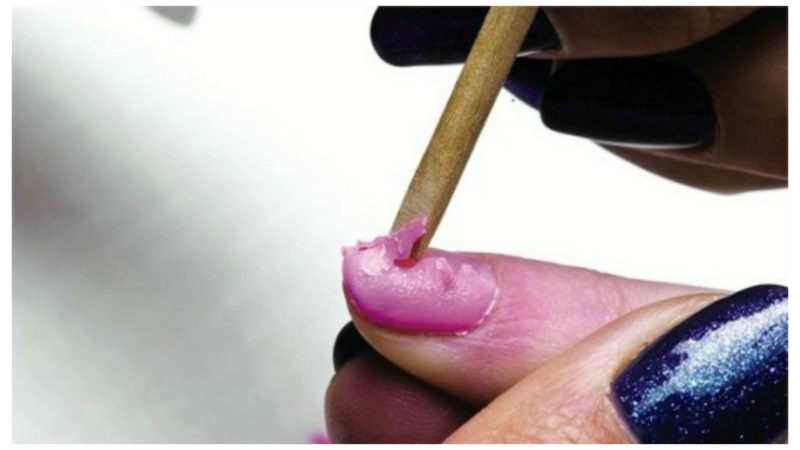
To remove the coating by foil wrapping, it is necessary to prepare:
- food foil;
- jojoba oil or grape seed oil needed to soften the cuticle;
- liquid for splitting varnish;
- orange stick
- nail file;
- cotton pads.
When using methods that do not require the use of foil, the last item from the list of necessary materials is excluded. Otherwise, the above list does not change. A larger amount of nail polish remover should be prepared.
It is interesting to know: an orange stick can be replaced with an ordinary cotton swab, nail polish remover with acetone, an ordinary baby cream or hand cream is often used instead of grape seed oil.
The process of removing shellac at home
As mentioned above, shellac is removed with or without foil.Instead of nail polish remover, acetone is often used. Consider each of the above methods in more detail.
Foil removal
The process of removing shellac begins with a thorough treatment of the skin around the nails with a protective cream or oil, which will avoid the negative effects of solvents on it. Hands should be washed thoroughly, apply a protective substance and rub it into the skin. After that, the nail is ground with a nail file for grinding, while removing the top top layer of the coating. This can not be done, however, resistant to the chemical effects of TOP will put a woman before the need for more prolonged treatment of gel polish with a solvent.
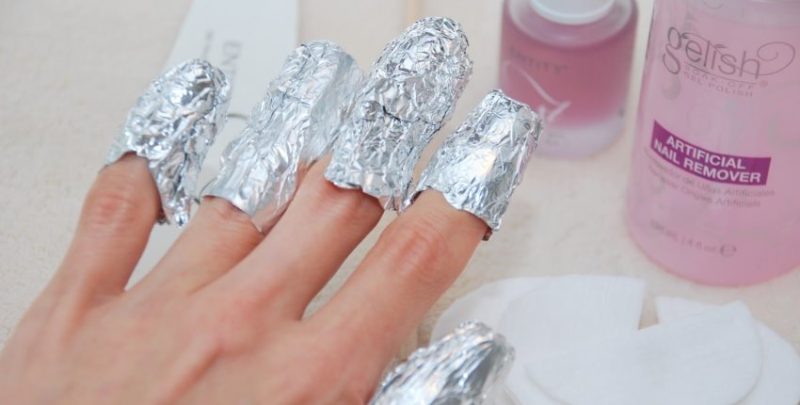
After the TOP is removed, it is necessary to apply a liquid-solvent to the nails. To do this, cotton pads are moistened in acetone, slightly wrung out and wrapped with them on each finger that needs processing. If there is a French manicure, the disc should completely cover the tip of the nail on the treated side.
The applied discs are fixed to the nail with pieces of foil, wrapping each finger around it in a circle and giving the foil the necessary shape. Each nail should be in a kind of cover that does not allow the solvent to evaporate from the cotton pad. At the same time, it is recommended to hold your hands with the back of your hand up, slightly raising your fingers. This will ensure the flow of liquid vapor to the tips of the nails.
Discs treated with acetone should be kept on the fingers for about 15 minutes. After that, the foil is removed and the result is evaluated. Gel polish should go to shreds. The departure of an even and dense coating layer indicates the need for a longer treatment.
Exiting varnish is removed using an orange or cotton swab moistened with acetone. In addition, it is permissible to use a metal manicure shovel. Insufficiently dissolved traces of varnish can be removed by reprocessing the nail with acetone or grind off with a nail file designed for polishing nails.
How to remove coating without foil
To remove gel polish without wrapping it with foil, you will need a small container filled with a solvent liquid or acetone. The preparatory phase is no different from the above method. The nail is also treated with a nail file to remove TOP, hands carefully lubricated with a protective cream or oil.
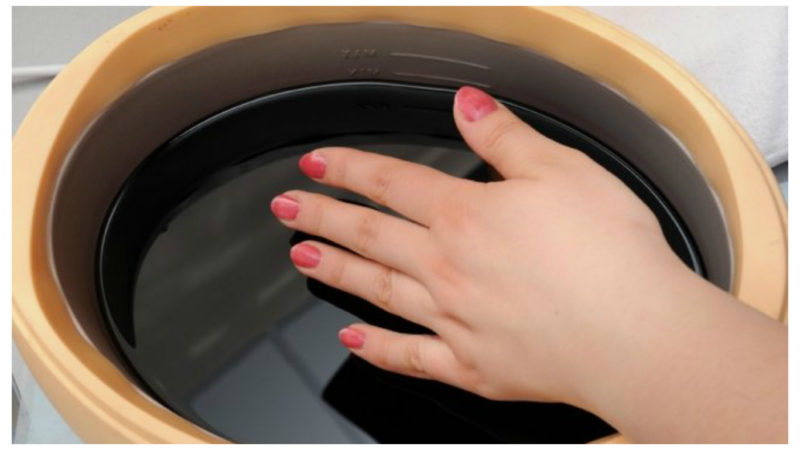
After that, the fingers are immersed in the liquid so that the nails are completely lowered into the solution. In this position, they are kept for about 8 minutes, after which they are removed, their hands wiped with a dry cloth and the outgoing varnish is removed with a stick or a pusher. Undetected traces of the coating on the nails are again immersed in a solvent for 1-2 minutes, after which they again try to cleanse.
After complete removal of varnish, the hands are thoroughly washed in running water and treated with means to moisturize the skin and restore the structure of the nail. This is necessary, since treatment with chemicals containing acetone leads to damage to the nail plates. In this case, the nail becomes ugly and brittle.
This is important: removal of shellac by immersion of the fingertips in a solvent composition is possible only in the absence of skin lesions and symptoms of skin diseases. Even the most harmless solvents have a certain irritating effect and can aggravate the course of the disease.
Acetone removal
To remove shellac on your own, the use of acetone is possible, but not advisable. The fact is that the solvent is a fairly aggressive chemical substance that can adversely affect human health. With local contact (immersion of nails in a liquid), local and general allergic reactions, such as urticaria, angioedema, anaphylactic shock, may occur. In addition, the substance greatly dries the skin and violates the structure of the nail, which in the future requires measures to restore it.
In addition to the above, while being near the container with acetone, poisoning by its vapors is possible.In this case, the victim develops edema of the respiratory tract, respiratory failure, damage to the central nervous system. To avoid such phenomena, it is recommended to think in advance about how to remove shellac without using toxic chemical compounds. If you decide to use acetone, while standing next to the container, you must use respiratory tract protection or carry out the procedure with maximum fresh air.
Where to buy and how much are shellac removers
The popularity of shellac also determines the widespread use of funds for its removal. The compositions have significant differences in price, quality, volume, country of origin and their chemical components. Today you can buy the necessary fluid in cosmetics stores, beauty salons, online stores. For example, Yandex Market offers about 70 types of liquid, the cost of which varies from 50 to 1500 rubles. The goods are delivered within Moscow and the Moscow region.

Approximate prices for various funds are presented in the list below:
- Lafitel - 122 rubles;
- Severina - 455 rubles;
- Ganni gel polish remover - 200 rubles;
- Domix - 129 rubles;
- CND shellac - 1500 rubles;
- Dream - 55 rubles;
- Acetone - 20 rubles.
When calculating the budget, it should include not only the cost of the nail polish remover itself, but also the amount of financial costs necessary to purchase other consumables: hand cream, cotton swabs, foil and other things. In some cases, visiting a beauty salon may be more economically feasible than buying the necessary funds for personal use.
Restoration of nails
It is no secret that shellac itself does not spoil nails. However, in the process of removal, a rather serious chemical effect is exerted on the structure and skin near the nail. This requires certain measures aimed at restoring damaged tissues.
Herbal bath

After the manicure has been removed, the nails are restored by applying baths from medicinal herbs. To strengthen the plates, herbs such as yarrow, nettle, and crushed oak bark are used.
To prepare the solution, 1 tablespoon of dry raw material is poured into a 0.5 liter container, poured with boiling water and insisted for half an hour. The resulting composition is filtered through gauze and, if necessary, heated. The temperature of the infusion should be 36-38˚С.
The nails are immersed in the resulting broth, kept for 15 minutes, after which the hands are wiped dry with a towel. The procedure is repeated every other day, the total number of baths should not exceed 10-12 times.
Iodine bath
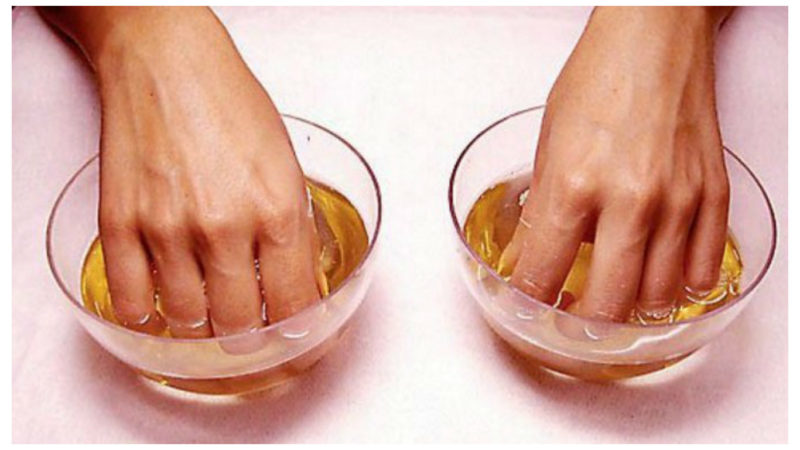
After removing shellac, nails can be restored with iodine. As a rule, baths with the addition of this component include other restorative elements. Below are popular recipes for regenerating nails.
- Iodine and salt: in 200 ml of water add 3-4 drops of iodine and 1 tablespoon of salt. The components are mixed, after which the phalanges of the fingers are immersed in the resulting product. The duration of the procedure is no more than 15 minutes. Baths are done every other day for 1-2 weeks.
- Iodine and medicinal herbs: 5 drops of iodine are added to the decoction of medicinal herbs, the preparation of which was described in the section above. The treatment process does not differ from that when using purely herbal formulations.
- Oil, water and iodine: to prepare an oil-iodine bath, you should take 1 cup of water (200 ml), 2 tablespoons of vegetable oil and a teaspoon of an alcoholic solution of iodine. Iodine is added to water, stirred, after which the resulting substance is mixed with oil. To do this, the composition is heated in a water bath. The exposure time of nails in such a bath is 7-10 minutes. The procedure is repeated every other day, for a week.
It is worth noting that when using iodine, it is unacceptable to violate the treatment regimen upwards.An increase in the number of procedures or the concentration of the active substance may not have the best effect on the state of health.
Beer bath
A beer bath for nails is a decoction of chamomile flowers made on beer. The drug is easily made at home. To do this, take 250 ml of dark beer, heat it without bringing it to a boil, pour 1 tablespoon of dried flowers of a pharmacy chamomile with a heated drink. The liquid is insisted for 15 minutes in a water bath, after which it is filtered and cooled.
It is necessary to apply a bath daily, for 15 minutes a day. The result is noticeable a few days after the start of treatment. Such baths are not dangerous and can be used prophylactically for a long period of time.
Lemon bath
A bath using lemon juice allows you to restore the structure of nails, bleach them and accelerate growth. To prepare it, you need to mix 100 grams of glycerin, 2 tablespoons of lemon juice and 1 tablespoon of honey. The mixture is heated to a comfortable temperature, after which the phalanges of the fingers are immersed in it. The duration of the procedure is 15-20 minutes. Multiplicity of execution - every other day. The course of treatment is 2 weeks.
Salt bath
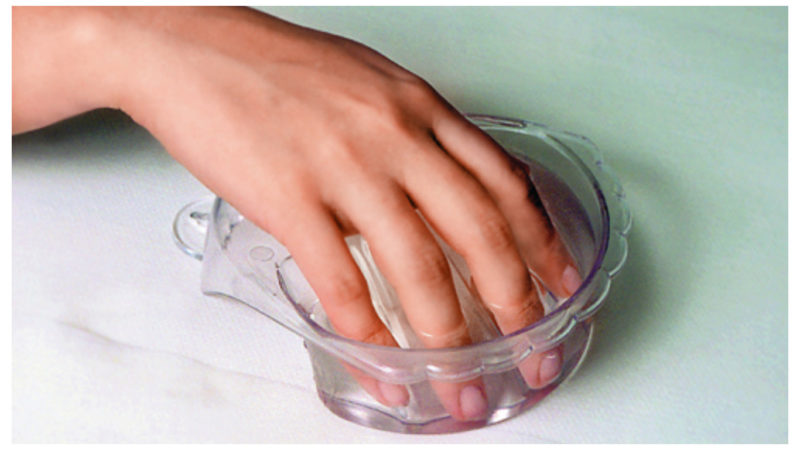
To prepare the solution, table or sea salt is used. A tablespoon of the mineral is dissolved in 200 ml of water heated to 40 ° C, after which the composition is considered ready. The phalanges of the fingers are immersed in salt water and incubated in it for 20 minutes. After the procedure, it is recommended to rinse your hands and treat them with cream.
It is interesting to know: the salt bath becomes more useful and more pleasant if you add a few drops of aromatic essential oil to it. In addition, almost any reducing components can be added to the solution: iodine, concentrated decoction of medicinal herbs, juice of citrus fruits.
From the foregoing, it is clear how to quickly remove shellac and restore nails after exposure to gel polish removers. Using the knowledge gained, every woman can for many years keep her nails in a well-groomed and healthy state.


